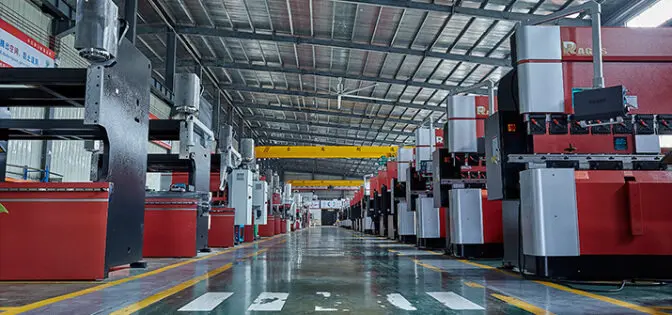Company Profile
ANYANG YOUNENGDE ELECTRIC CO.,LTD is a high-tech enterprise specializing in the research and development, design, manufacture, installation and commissioning of DC plasma melting equipment, high power DC power supply, and solid waste/dangerous waste non-toxic treatment equipment.
Our company has obtained 35 new practical technical patents on DC plasma melting equipment. The equipment capacity is from 50kVA to 30000kVA.
The process of extracting and enriching rare and precious metals from raw ore, catalyst and industrial solid waste is mature with high yield. The yield of metallic silicon and 75 # ferrosilicon is high in the smelting of silica. The recovery rate of non-ferrous metals is high when waste circuit boards are directly melted. Calcium aluminate smelting process is mature.
Our company has carried out professional cooperation and technical exchanges with many enterprises and units at home and abroad, and supplied high-quality products.
Product Case List
Institute of Mechanics of the Chinese Academy of Sciences (Technical Service Cooperation)
Suzhou Institute of Design and Research (Technical Service Cooperation)
Anyang Longxin Silicon Industry Co., Ltd (Metallic silicon powder remelting DC furnace)
Hubei Boxin New Materials Technology Co., Ltd (Metallic silicon smelting DC furnace)
Danjiangkou Huiyuan Hejin Co.,LTD (Metallic silicon smelting DC furnace)
Beijing CENTRAL IRON&STEEL RESEARCH INSTITUTE (Steel Furnace)
Dalian Wilte Steel Co., Ltd (Vanadium Titanium Iron Experimental DC Furnace)
Henan Liyuan Group Co.,LTD ( Ferroalloy Furnace)
Wu'an Yuhua Steel Group Co.,LTD (Steel aluminum alloy DC Furnace)
Tangshan Ganglu Steel Group Co.,LTD (Steel aluminum alloy DC Furnace)
Heilongjiang Jianghui Huanbao Technology Co., Ltd (Ferronickel alloy DC furnace)
Guangdong Guangqing Jinshu Technology Co., Ltd (Ferronickel alloy DC furnace)
Henan Jiaozuo Mr. Zuo (Multi-function DC furnace)
Rizhao Zhenghong Yanchuang New Materials Co.,Ltd (Ferronickel alloy DC furnace)
Fujian Anxi Ansheng Mining Co., Ltd (Multi-function DC furnace)
Liaoyangshi Taizihequ Boyi Zhuzaochang (Waste zinc slag DC furnace)
Chongqing Saiyadi Energy Technology Co., Ltd (Red mud ironmaking DC furnace)
Liaoning Fuyun Refractory Co., Ltd (Calcium aluminate DC furnace)
Huolinguole GeRun Huanbao Technology Co., Ltd (Calcium aluminate DC furnace)
Huolinguole Lifenglvye Co.,Ltd (Calcium aluminate DC furnace)
Dalian Yishun Lvse Technology Co., Ltd (Calcium aluminate DC furnace)
Danjiangkoushi WanJi Abrasive Materials Co., Ltd (Corundum DC furnace)
Jiangsu Nantong TaiYang Technology Co., Ltd (Beryllium copper alloy DC furnace)
Jiangsu Nantong TaiYang Technology Co., Ltd (Beryllium copper alloy DC furnace)
Indonesia PT METALINDO MAKMUR MANDIRI (Test DC furnace)
Korea HF METAL TRADE CO.,LTD (PCB DC furnace)
Guangdong Meizhou Mr. Fu (PCB DC furnace)
Guizhou Yixiang Kuangye(Group) Zhenyuan Runda Co., Ltd (Precious metals DC furnace)
Guangxi Zhongwu Kuangye Co.,LTD (Precious metals DC furnace)
Longyan Changyu New Material Technology Co., Ltd (Precious metals DC furnace)
Hubei Huanggang Mr. Zhao (Precious metals DC furnace)
Henan Yihui Jinshu Technology Co., Ltd (Three way catalytic smelting DC furnace)
Shanghai Yudun Xincailiao Technology Co., Ltd (Three way catalytic smelting DC furnace)
Zhejiang Qike Shengwu Technology Co., Ltd (Three way catalytic smelting DC furnace)
Zhejiang Metallurgical Research Institute (Three way catalytic smelting DC furnace)
Hubei Zhongyuan Chucheng Environmental Protection Technology Co., Ltd (Three way catalytic smelting DC furnace)
Huaian Zhongshun Environmental Protection Technology Co., Ltd (Two sets of three way catalytic smelting DC furnace)
Minshan Huanneng Hi-tech Gufen Co.,Ltd (Lead zinc ore test DC furnace)
Zhejiang Teli Renewable Resources Co., Ltd (Copper sludge recovery DC furnace)
Keyuan environmental equipment Co., Ltd (Hazardous waste disposal DC furnace)
Guanyinshan Waste Incineration Station (Ash harmless disposal DC furnace)
Chaozhou Dongsheng Environmental Protection Technology Co., LTD (Rock wool DC furnace)
Yongxing Changlong environmental protection Technology Co., LTD (Tin slag smelting and recycling DC furnace)
Kunming Dingbang Technology Co., LTD (Tin smelting DC furnace)











